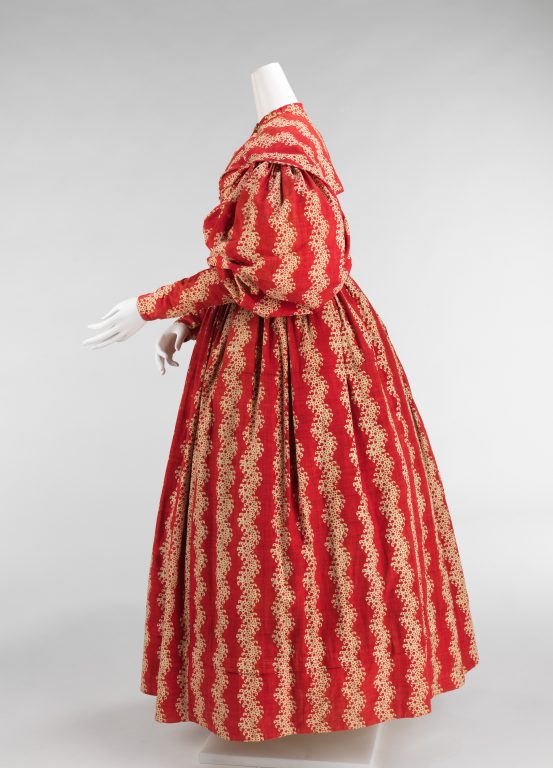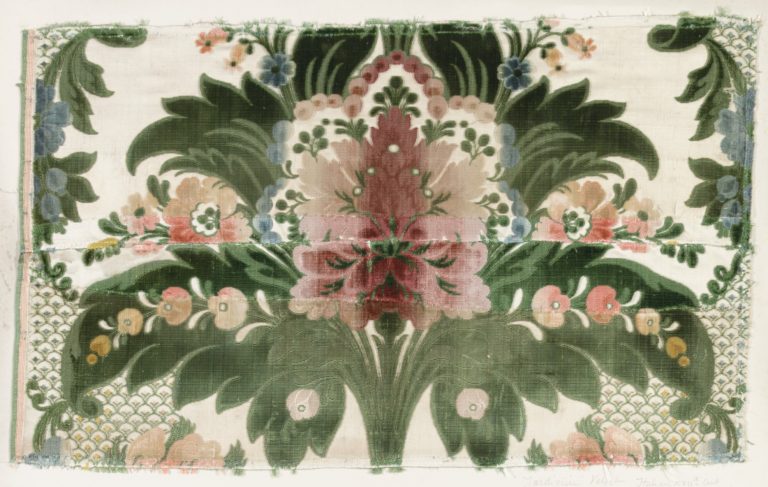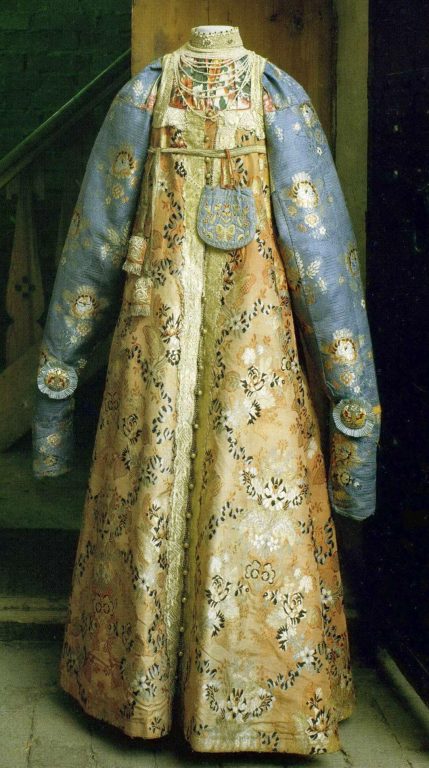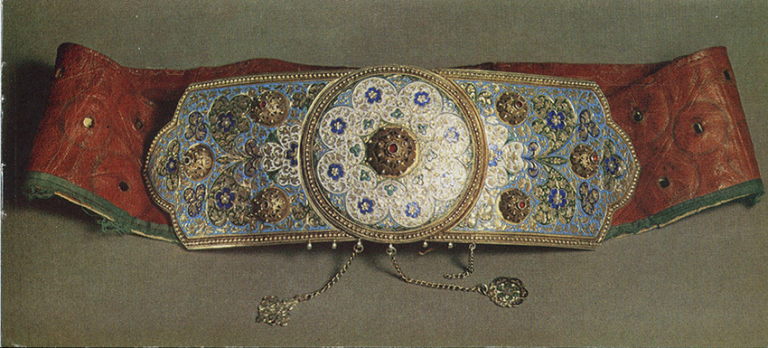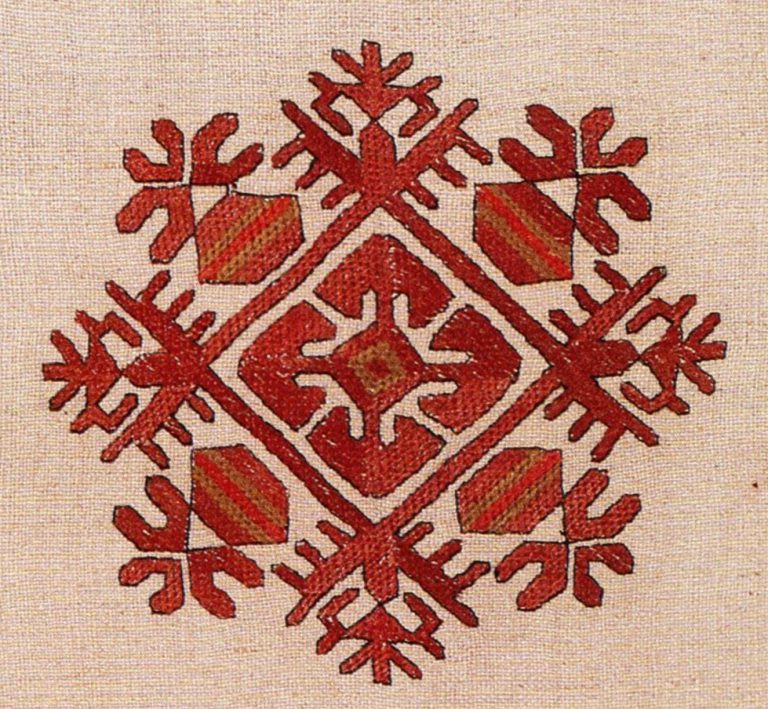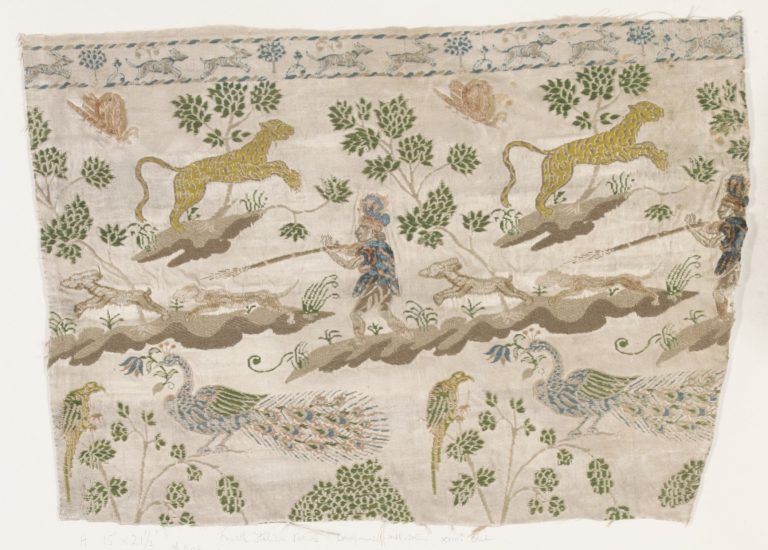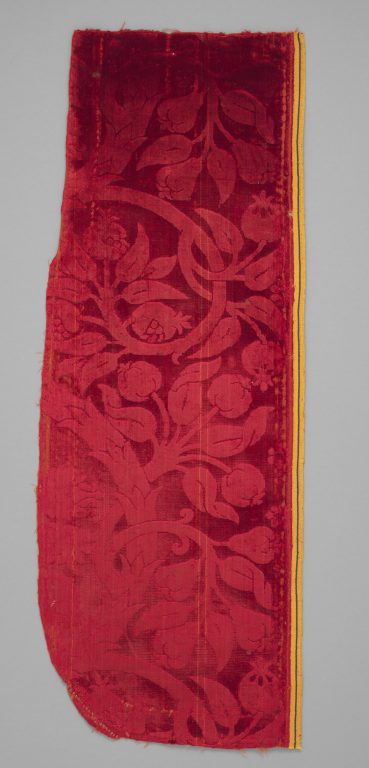

-
Type of sourceDatabase “Metropolitan Museum of Art”
-
Fund that the source refers toMetropolitan Museum of Art
-
This transitional style indicates the aesthetic of its period. The large gigot sleeves were popular from the early 1830s through 1836 when they began to diminish to the tightly fitted sleeves of the following period. This type of sleeve was generally supported by whalebone or down filling. Another indication of its transitional disposition is the waist height and the full bell-shaped skirts. The rich color and lively pattern is engaging and in line with the mode of the day.
The female silhouette of the middle of the 19th century consisted of a fitted corseted bodice and wide full skirts. The conical skirts developed between the 1830s, when the high waist of the Empire silhouette was lowered and the skirts became more bell shaped, to the late 1860s, when the fullness of the skirts were pulled to the back and the bustle developed. The flared skirts of the period gradually increased in size throughout and were supported by a number of methods. Originally support came from multiple layers of petticoats which, due to weight and discomfort, were supplanted by underskirts comprised of graduated hoops made from materials such as baleen, cane and metal. The fashions during this time allowed the textiles to stand out because of the vast surface areas of the skirt and a relatively minimal amount of excess trim.


